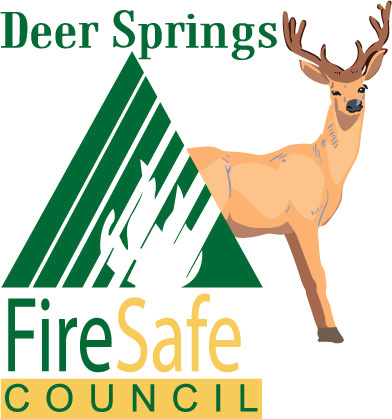There is no lack of evacuation preparation information and to-do lists on the internet. Here are three that we can recommend and have referenced in previous Fire Safety News editions:
https://www.readyforwildfire.org/
https://www.sdge.com/more-information/safety/emergency-preparedness
Any time you feel threatened or are fearful for the safety of you and your family do not wait for an evacuation order. Leave immediately!
It must be remembered that guidelines and suggestions are just that. You must adopt and adapt them according to your family's needs and abilities when developing your plan. Wildfire is dynamic and capricious. Under Red Flag conditions of high winds and low humidity it can devour 100 acres of chaparral in 60 seconds. Develop variations on that plan to deal with factors such as a sudden change in the fire's direction of travel and how that would affect your evacuation route.
Put on your situational awareness. If there is a fire nearby and at any time you feel threatened or are fearful for the safety of you and your family do not wait for an evacuation order. Leave immediately! Do not wait to be told. Things can mostly be replaced, lives cannot.
The following suggestions are just that: suggestions. They can provide a starting point that you can adapt for your own situation whether as a single or member of a large family. You know what motivates you and your family. You also know what is important in your lives.
DEVELOP A PLAN:
A husband and wife who were evacuated during the 2017 Lilac Fire looked back on the chaos of the event and came up with a list of tasks that could be accomplished if given various times to evacuate from as short as 5 minutes to more than an hour. Each had specific tasks to perform: utilities to secure, doors and windows to close, outside furnishings to move, and items to load in the car.
In practice, it is probably overly optimistic to attempt scripting such an event on a timeline but this exercise can be useful to help us set priorities and reveal our weaknesses.
Use the links provided in these newsletters as a starting point to develop a plan that will be specific to your home and family. The entire family can be involved in developing the plan and everyone should know the plan at a level that is appropriate for their age and ability before there is smoke in the air.
Don't forget your pets in your planning. Have carriers or kennels ready to go and if you think you will need to evacuate, round up and package your pets for travel. They may be unhappy for a short while but you may not be able to find them when it is time to leave and that could endanger all of you.
Owners of large animals must deal with additional considerations and complications such as trailers. This website as well as this one and this one offer some suggestions to begin your planning process.
REVIEW YOUR PLAN:
Life situations change. Review your plan at least annually. Have there been any health changes to consider in an evacuation? Has a family member moved away and is no longer available to assist with evacuation preparations? The list goes on and may suggest major changes that need to be made to the plan.
BE SELF-SUFFICIENT AND SELF-RELIANT:
You must to be prepared to take responsibility for you and your family.
Assemble 72 hour survival kits or "go-bags" for each family member. There are suggestions offered in the links presented above. At minimum, the kit should contain at least one gallon of water per person per day, nutrient dense non-perishable foods, prescription meds and any other unique needs.
Think about a similar go-bag or survival kit for your pets. Don't forget the dust masks as you may encounter smoke. Keep your vehicle fuel tank at least half full and park your car where you will not have to back up to leave — it can be difficult enough to maneuver straight ahead in smoke. If your car is running in smoky conditions, do not turn it off — it may not restart.
Evacuating early gives you and your family the best chance for surviving a wildfire. It also helps emergency responders by reducing congestion on the roadways.
HAVE REASONABLE EXPECTATIONS:
One of the lessons that always emerges from evacuation seminars is that help may not always be on the way in a major wildfire evacuation. First responders will not have enough personnel to immediately respond to every call for help. There will not be enough law enforcement units to direct traffic everywhere they are needed or where you think they ought to be. You may want to go north at a roadblock and the Deputy or Officer may tell you to go south. His job is to move people out as fast a possible and he likely will not be very tolerant of any argument.
INCREASE YOUR SITUATIONAL AWARENESS
We have already discussed situational awareness and family communications in other handouts. If there is smoke in the air it's time to ramp up your situational awareness. This is especially true during Red Flag conditions when fire danger can become critical very quickly. Check frequently updated information sources such as National Weather Service, CAL FIRE, San Diego 211 or various other apps that you are comfortable using for alerting, incident status, and weather.
Remember: Plan
Prepare
Practice
Pay attention
